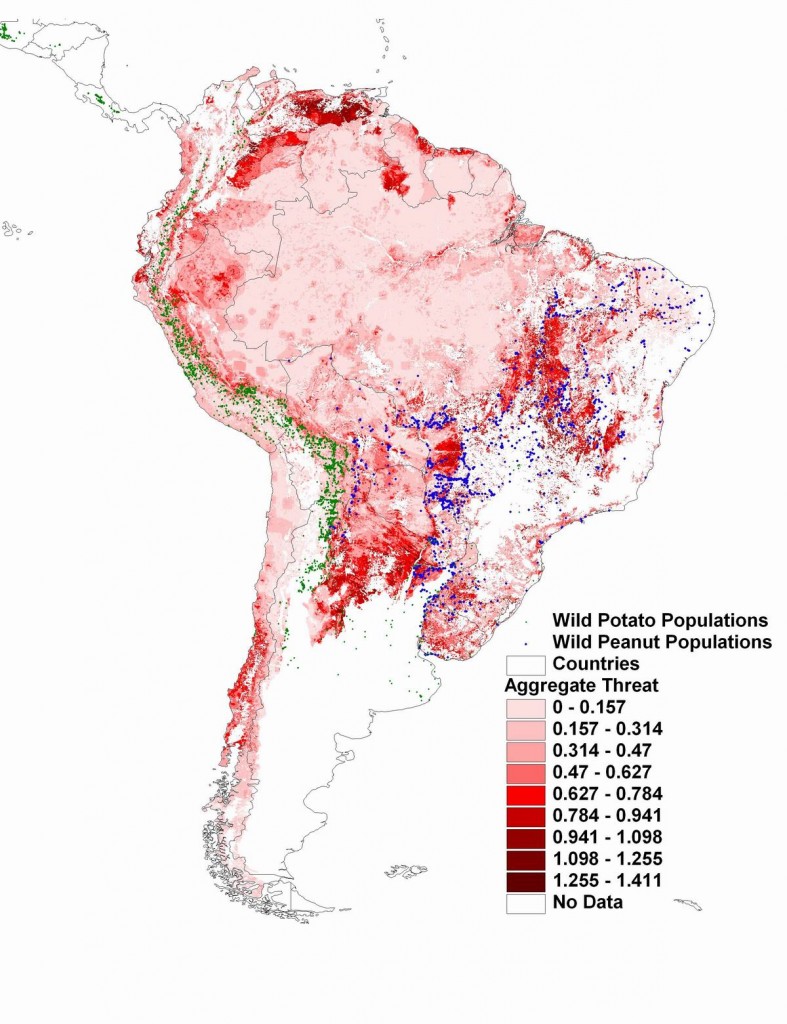Our friend Andy Jarvis and co-workers recently published a paper in the Journal for Nature Conservation entitled “Assessment of threats to ecosystems in South America.” Very interesting in its own right, but check out the map below. Andy has very kindly superimposed for us the location of peanut and potato wild relatives on the ecosystem threat map from the paper. A good way to prioritize conservation? You saw it here first.

Geo mashup artist needed
Luigi mentioned the UK Science’s Museum’s interactive map on climate change and crops. Elsewhere, 1 he draws attention to maps of diabetes around the world. Now I find a map of “small farms” in the US.
What I want, obviously, is a graphic that will show me any relationships between the prevalence of small farms and diabetes, over time, corrected for access to the internet, obviously, and for the whole world. Not a lot to ask, is it? Oh, and I can’t find diabetes at Gapminder World.
Nibbles: Cassava, Success, Fish, Models, Videos, Radio, Grazing
- South Africans produce virus-resistant cassava.
- Success stories in agricultural development documented. Some agrobiodiversity in there.
- Fisheries and food security. And more. And more: why not eat “weedy”fish?
- A crop modeler speaks.
- African agriculture is on youtube, but just barely.
- Forage grasses for beginners. Straight from the grazier’s mouth.
More graphics on the global effects of climate change on crops
The Science Museum in London has launched an interactive map. The data are from the Met Office’s Hadley Centre, as analyzed by the Walker Institute. I like the Hadley Centre’s one-page summary.
Niche modeling and common sense
We have blogged a few times about niche modeling and how to improve it. Below Mohamed Fawzy Farag Nawar briefly highlights what will become a useful resource in this field, Lifemapper (the data for the modeling comes from GBIF), but points out some limitations.
Lifemapper.org is an initiative to implement online some sort of generic model to predict where a species might exists based on where it was collected, or where it was otherwise documented that it lived. Fine. But here is the results of the model on the species Clivipollia pulcher. This is a marine mollusk that was found along the coasts of eastern Australian, Papua New Guinea and the Philippines. You will see on the map of predicted distribution that the model suggests it might be found in various places inland in central Africa and Latin America. That is what you get when essential prior knowledge is not introduced to the model. Something like telling the developer of the model that marine species should be modeled to a different set of environmental data than Worldclim, which should only be used for terrestrial fauna and flora. Agricultural species are included in Lifemapper, though again the predicted distributions will have to be looked at fairly carefully before use.